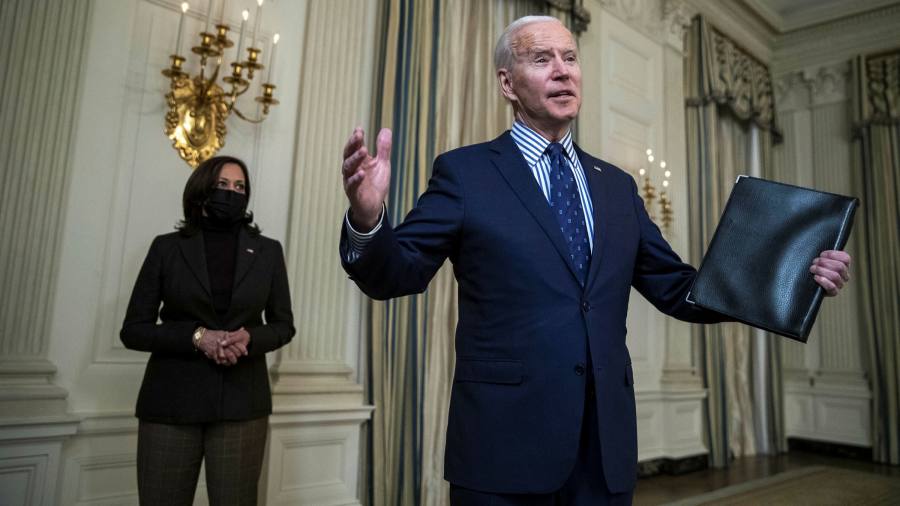[ad_1]
For the decade after the 2008/2009 financial crisis, many commentators pointed out that monetary policy had become the “only game in townâ€. With governments concerned to repair their own balance sheets as tax revenues collapsed following the financial crisis, it was left up to central bankers to try to stimulate the economy through cheap money and unconventional asset-purchase programmes. The gargantuan fiscal stimulus package that will soon pass the US Congress will end this regime. The shift will have significance far beyond America’s borders.Â
The OECD’s latest economic outlook forecasts that US president Joe Biden’s programme of government spending — worth 8.5 per cent of US national income — together with the rapid rollout of vaccination efforts, will lift global income by 1 per cent this year. The Paris-based think-tank estimates that the world economy will expand 5.6 per cent this year from its pandemic-induced low — up from its previous 4.2 per cent forecast last December.
A booming US economy means economic demand will “spill over†into the rest of the world, particularly its nearest neighbours and most important trading partners Mexico and Canada as well as export-oriented economies in east Asia and Europe. For advanced economies, which borrow in their own currencies, the implications of faster growth in the US is almost entirely positive — increasing potential exports as well as encouraging the “risk on†sentiment that boosts investment.
An overheating US — if the greater demand for goods and services leads to capacity constraints and causes higher inflation — could, however, trigger higher interest rates globally. Investors are betting that the Federal Reserve will either be forced into increasing rates to choke off inflationary pressure or feel comfortable removing stimulus as the economy returns to something near full employment. Members of the European Central Bank’s board are already concerned that this could raise financing costs — reducing the effectiveness of their stimulus efforts in a region where monetary policy remains by far the largest form of stimulus.Â
Poorer countries that struggle to borrow in their own currencies will find it harder to adjust. Rising rates will reverse some of the capital flows that have financed fragile economies and led to a stronger dollar, especially if the US recovery diverges from other rich countries. The most exposed countries are in a better position today than during the 2013 “taper tantrumâ€, when the Fed suggested it would begin to reduce the pace of asset purchases, and emerging market currencies plummeted. Many have spent the intervening period building up reserves to protect against similar outflows and reduce their reliance on external, dollar-denominated finance.Â
Higher public sector debt loads, however, mean that for many poor countries rising rates will make themselves felt through government deficits as much as current account deficits — higher interest costs could mean some governments struggle to service debt. Rising commodity prices — lifted by both Chinese and US stimulus efforts — will help exporters but add to the woes of importers.Â
Ultimately, though, the policy mix is an improvement on the post-2008 reliance on monetary policy. If the OECD is right about the impact of Biden’s stimulus programme — and there is good reason to think it will be — then a stronger US economy will help to drive a global recovery. It would be even better if the world no longer had to rely on just one source for stimulus and other rich countries were similarly ambitious.Â
[ad_2]
Source link





